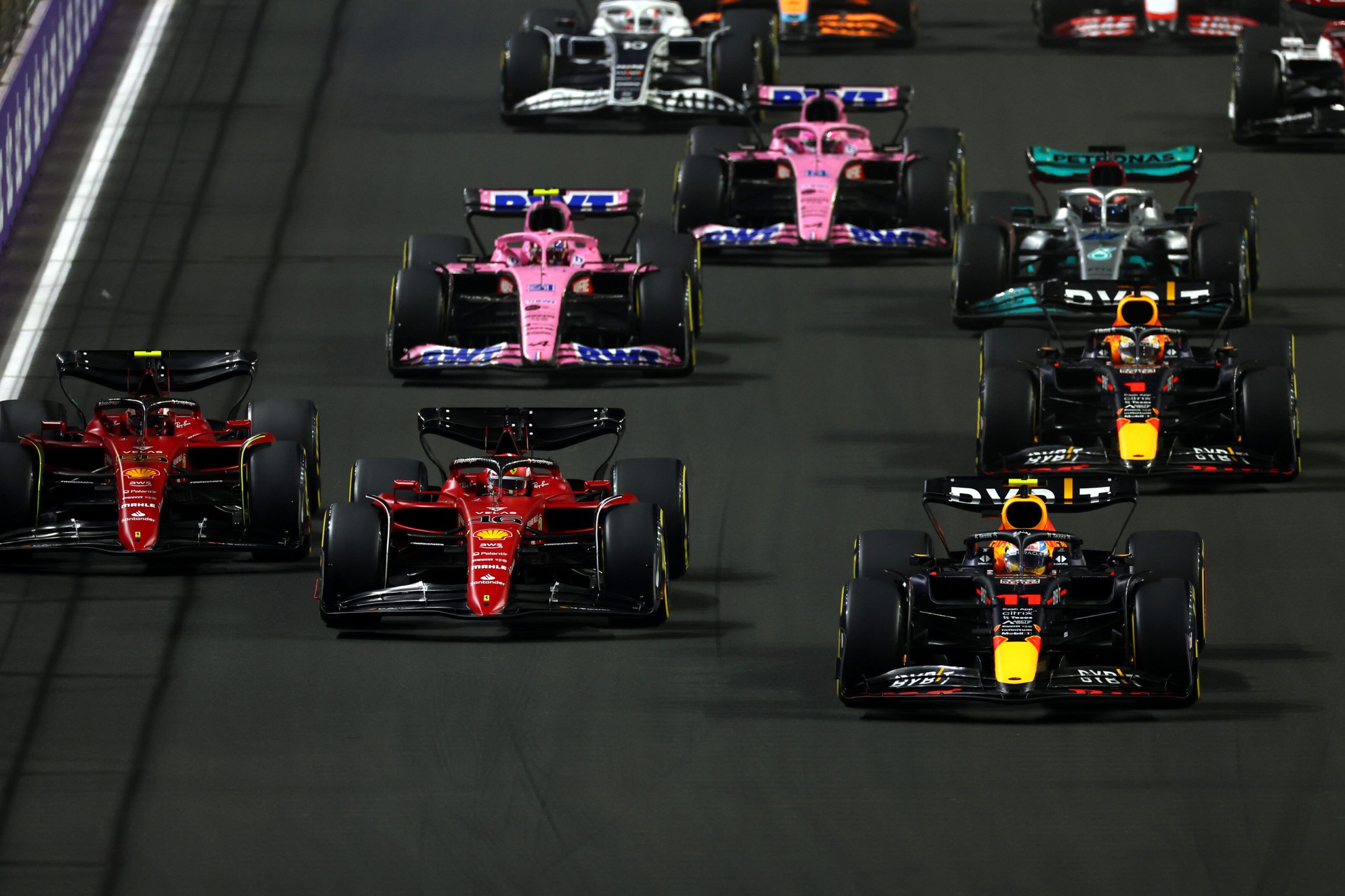F1 drivers like Max Verstappen, Charles Leclerc and Carlos Sainz state that DRS is still useful, as they add on following becoming easier now.
Formula 1’s latest technical regulations overhaul has been widely approved of by drivers, but somewhat slated for continuing on with DRS. Three of the projected 2022 championship protagonists have heralded the work done by F1 behind the scenes, and have added their thoughts on DRS in 2022.
The Drag Reduction System (DRS) reduces aerodynamic drag through the use of an opening and closing rear wing flap, in order to increase the car’s speed and increase the likelihood of an overtake. It can be operated during practice and qualifying at all times within the DRS zones, and during the race when within a second of another car in front at the detection point.
In anticipation of the return to the historic Albert Park circuit in Melbourne for the Australian GP – the first in the country since early 2019 – the track has been heavily upgraded and revised to promote closer racing. For the first time, a record four DRS zones are being installed, including through a new section between Turns 8 and 9.
In the past, DRS has often not been powerful enough to make as big a difference on the racing as at many other circuits, with its relatively short straights and long braking zones. Therefore the introduction of the new zone clearly looks to quash that previous pitfall.
Current drivers’ championship leader Leclerc, second-placed Sainz and third-placed Verstappen believe DRS is a necessary component in modern F1, and shouldn’t be removed as was previously set to happen in the line with the new aerodynamic regulations.
“Well, if I didn’t have DRS [in the Saudi Arabian Grand Prix], I would have never passed,” stated Saudi Arabia race winner and reigning drivers’ champion Max Verstappen. “I think we are still too sensitive for that. And of course, some tracks are easier to pass than others. But for me at the moment, if DRS wouldn’t be there, I would have been second.”
Verstappen however says that the ‘raceability’ of the new cars is dependent on other factors, such as the new 18-inch Pirelli tyres and the effect the weight increase of the cars has on the rubber. “I think the cars are better to follow, it just depends on the tyre,” he said.
“Like the hard tyre was capable of following closer to the other compounds – and this depends on the track – but they just fall apart. As soon as you follow for a few laps, they just open up. And I think it’s also a little bit of a thing probably tyres, but also the weight of the car pushes you over the tyre edge. So, this is something we need to look at for the future.
“We improved the following with the cars, and I think probably the racing, but if the tyres don’t let you, due to whatever reason, if it’s the weight of the actual car that’s a bit of a shame because in the first stint I think we could have actually raced a bit more if the tyre didn’t die. Because everyone was basically struggling with the same thing at one point. So yeah, we need to understand that a bit better,” summed up Verstappen.
Ferrari’s Leclerc thinks F1 would be “boring” without DRS, and sees it as a positive for the sport even though it may have cost him the victory to Verstappen in Jeddah, with the Red Bull river hunting down the Monegasque and ultimately passing him for the win.
“I think DRS needs to stay for now otherwise it would be very boring so yes,” said Leclerc. “As much as following has been better than last year, I like this step as a driver. I think it is very positive for the sport but is not enough to get rid of DRS. I actually enjoy [DRS] and it is part of the strategy for each drivers in terms of defending and overtaking and racing for now.
“[This year’s cars are] definitely a step forward compared to last year in terms of following. The balance of the car is much more predictable, compared to last year’s car where it was very difficult to understand whether you will lose the front, or the rear being behind. This helps us to have the confidence, to actually push behind someone and to be a bit closer. So, it is a step forward but, as Max said, I think there are other things that we can probably look out for for the future to make it even better,” summed up Leclerc.
His F1 teammate Sainz likens the system to overtaking “on the highway”, and so thinks that the speed delta at each zone needs to be assessed more closely. “I think without DRS passing would be reduced significantly,” he said. “So I think we are still better off with DRS. What we might need to consider maybe is the speed delta that there is with the DRS might be a bit too much, which gives the car behind maybe too much of a speed delta [so] that sometimes the overtake is done before the braking.
“And you’d much rather have the two cars battling under braking rather than passing like in the highway. Now, that is sometimes what can happen. So maybe we need to have a look at this but we definitely need DRS nowadays,” summed up Sainz.
The story was written by Danny Herbert
Here’s F1 drivers on Drive to Survive
Here’s Carlos Sainz on understanding where he is lacking
Here’s how Max Verstappen and Charles Leclerc described Saudi battle

